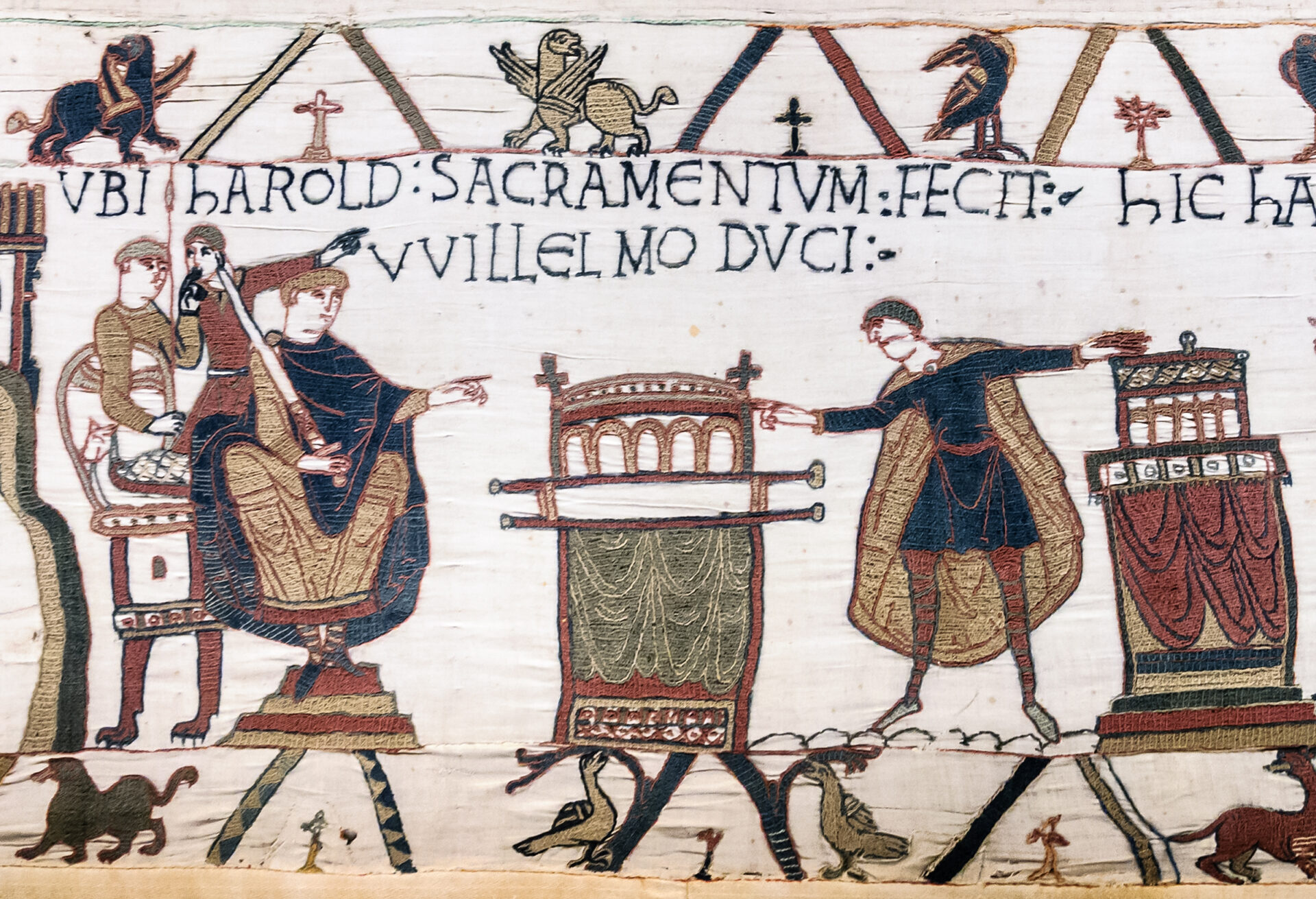Feudal practices varied from place to place and developed and altered with the passage of time. Nonetheless, certain general conceptions were accepted almost everywhere. One of the most significant was that of a feudal contract. The lord owed something to the vassal, just as the vassal owed something to the lord. When they entered into their relationship, the vassal rendered formal homage to his lord; that is, he became the lord’s “man.” He also promised him aid and counsel. Aid meant that he would appear when summoned, fully armed, and fight as a knight in the lord’s wars, subject perhaps to limits on the number of days’ service owed in any one year.
Counsel meant that he would join with his fellow vassals—his peers, or social equals— to form the lord’s court of justice, which alone could pass judgment on any one of them. He might also be required at his own expense to entertain his lord for a visit of specific length, and to give him money payments on special occasions—the marriage of the lord’s eldest daughter, the knighting of his eldest son, or, later on, his departure on a crusade. The vassal also swore fealty (fidelity) to his lord. In his turn, the lord was understood to owe protection and justice to his vassal.
If the vassal broke this contract, the lord would have to get the approval of a court made up of the vassal’s peers before he could proceed to a punishment, such as depriving the vassal of his fief (forfeiture). If the lord broke the contract, the vassal was expected to withdraw his homage and fealty in a public act of defiance before proceeding to open rebellion. Sometimes the contract was written; sometimes it was oral; sometimes the ceremony included a formal investiture by the lord in which he would give his kneeling vassal a symbol of the fief that was being transferred to him—a twig or a bit of earth.
When lord or vassal died, the contract had to be renewed with the successor. The son of a vassal, upon succeeding to his father’s fief, often had to pay relief; a special and often heavy cash payment similar to a modern inheritance tax. If the vassal died without heirs, the fief would escheat, or revert to the lord, who could bestow it on another vassal or not, as he saw fit. If the vassal’s heir was still a minor, the lord exercised the right of wardship, or guardianship, until the minor came of age; this meant that the lord received the revenues from the fief, and if he was unscrupulous he could milk it dry.
Within a feudal kingdom, the king theoretically occupied the top position in an imaginary pyramid of society. Immediately below him would be his vassals, men who held fiefs directly from the king, called tenants-in-chief. They in turn would be feudal lords; that is, they would give out various parts of their own property as fiefs to their own vassals. These men (the king’s vassals’ vassals) would be the king’s rear vassals, and so were at the next lower levels of the theoretical pyramid. But they, too, would often have vassals, and so on down for many more levels in a process called subinfeudation. But this was only theory.
Practice was more complicated still. A tenant-in-chief might hold only a very small fief directly from the king and not be a very important person at all, while a vassal’s vassal’s vassal might be rich and powerful. The dukes of Normandy, who were vassals to the king of France, were for some centuries much stronger than the king. A person might receive fiefs from more than one lord, and so owe homage and fealty to both.
What was he to do if one of his lords quarreled with the other and went to war? Which of his lords would have a prior right to count on his military help? This happened very often; one Bavarian count had twenty different fiefs held of twenty different lords. Gradually, therefore, there arose a new concept, that of a liege lord, the one to whom a vassal owed service ahead of any other. But in practice the difficulties often persisted. Even though feudal law became more subtle and more complex, armed might ultimately counted for more than legality.

